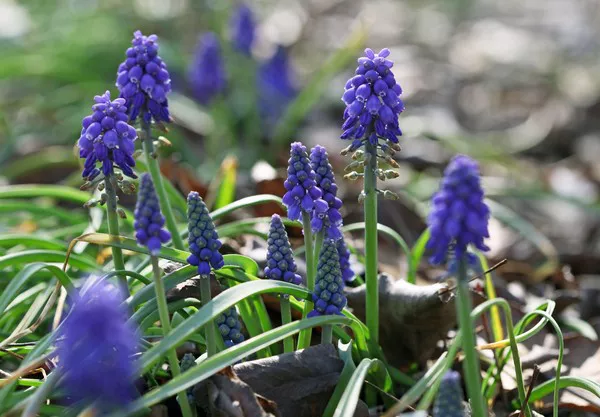Gardening can be a fulfilling and rewarding endeavor, but it comes with its share of challenges, one of the most persistent being plant pests. These unwelcome invaders can wreak havoc on your plants, causing damage and sometimes even leading to their demise.
Understanding the World of Pests
Pests are organisms that interfere with the health, growth, or aesthetic appeal of plants. They can be insects, mites, rodents, fungi, bacteria, or even weeds. Pests vary in size, behavior, and the type of damage they cause, making them a diverse and challenging group for gardeners to contend with. Identifying these pests and understanding their lifecycles is the first step toward effective pest management.
Common Types of Plant Pests
Insects: Insects are some of the most notorious plant pests. They include aphids, mealybugs, whiteflies, and beetles. These tiny creatures can cause damage by chewing on leaves, stems, and roots or by transmitting diseases.
Mites: Spider mites and other mites are closely related to insects but have distinct characteristics. They are known for their web-spinning abilities and can cause stippling or yellowing of leaves.
Rodents: Garden pests aren’t limited to small creatures; rodents like mice, rats, and gophers can also wreak havoc by gnawing on plant roots and stems.
Fungi: Fungal pathogens such as powdery mildew, rust, and blight can affect plants by causing discolored spots, wilting, and even death.
Bacteria: Bacterial infections can lead to diseases like fire blight in fruit trees, causing wilting, blackening, and death of plant parts.
Weeds: While not always harmful directly to plants, weeds compete for resources like water, sunlight, and nutrients, potentially stunting plant growth.
The Impact of Pests on Plants
Plant pests can have a range of detrimental effects on your garden and its inhabitants:
Reduced Growth: Pests can impair a plant’s ability to grow by damaging leaves, stems, and roots, ultimately limiting its overall size and vitality.
Deformed Appearance: Some pests cause visible deformities in plants, such as curled or distorted leaves, discolored spots, and abnormal growth patterns.
Lower Yield: In the case of fruit and vegetable plants, pests can reduce crop yield and quality, leading to smaller harvests.
Disease Transmission: Certain pests, like aphids, serve as vectors for plant diseases, spreading pathogens from one plant to another.
Weakened Immunity: Prolonged infestations can weaken a plant’s natural defenses, making it more susceptible to other stressors, including environmental factors and diseases.
Preventing Plant Pests
Prevention is often the most effective way to deal with plant pests. Here are some strategies to keep your garden pest-free:
Healthy Soil: Start with healthy soil that is rich in organic matter. Healthy plants are less vulnerable to pest attacks.
Crop Rotation: If you grow vegetables, practice crop rotation to prevent the buildup of pests specific to certain plants in the same area year after year.
Companion Planting: Some plants repel pests or attract beneficial insects. Research companion planting to find combinations that work for your garden.
Proper Spacing: Plant your crops with adequate spacing to promote good air circulation, reducing the risk of fungal diseases.
Clean Garden Tools: Sterilize your garden tools regularly to prevent the transfer of diseases from one plant to another.
Attract Beneficial Insects: Encourage the presence of ladybugs, parasitic wasps, and other beneficial insects that prey on pests.
Identifying Plant Pest Infestations
Recognizing the signs of a pest infestation early is crucial for effective pest management. Look out for these indicators:
Wilting or Yellowing Leaves: Discolored or wilting leaves may be a sign of pest damage or disease.
Holes or Chewed Leaves: Inspect the foliage for holes, chew marks, or irregular patterns, which are typical signs of insect or rodent damage.
Sticky Residue: A sticky residue on leaves or a black, sooty mold may indicate an infestation of sap-sucking insects like aphids.
Webbing: Spider mites and other mites leave behind fine webbing on plants.
Distorted Growth: Look for abnormal growth patterns, such as curling or twisting of leaves and stems.
Visible Pests: Sometimes, pests themselves can be observed on the plant. Be sure to identify them accurately for proper treatment.
Effective Pest Management
When preventive measures aren’t enough, it’s crucial to have a plan for managing plant pests. Here are some approaches:
Natural Predators: Release or encourage natural predators like ladybugs, lacewings, and parasitic wasps to control pest populations.
Hand-Picking: For smaller infestations, manually remove pests from the affected plants.
Organic Sprays: Use organic insecticidal soaps or neem oil to treat pests. Be sure to follow label instructions.
Biological Control: Introduce beneficial nematodes, predatory insects, or microbial agents that target specific pests.
Chemical Pesticides: As a last resort, consider chemical pesticides. Use them sparingly and selectively, following safety guidelines and considering their impact on non-target organisms.
Cultural Practices: Adjust your watering and pruning practices to minimize conditions favorable to pests. Removing infected plant parts can help prevent disease spread.
Conclusion
Plant pests are unwelcome guests in any garden, but with knowledge, vigilance, and proactive management, you can protect your plants from their damaging effects. Regular monitoring, proper identification, and a combination of prevention and intervention strategies will help you maintain a healthy, thriving garden. Remember that a successful pest management strategy often involves a holistic approach that considers the well-being of your entire garden ecosystem. By staying informed and taking action when necessary, you can enjoy a beautiful and pest-free garden year-round.


